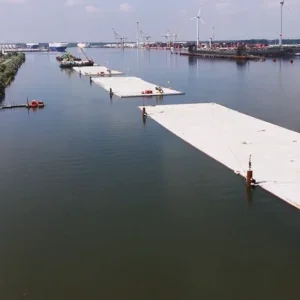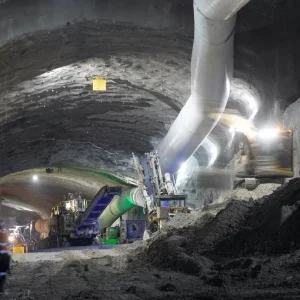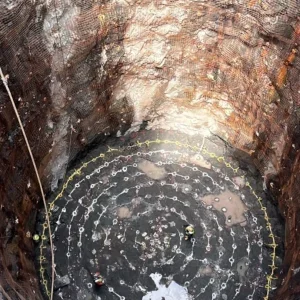After a heavy storm in the city of Indianapolis, Indiana, many people are reeling from the unpleasant smell of combined sewage overflow in river and streams. The city’s aging water and sewer infrastructure can cause hazardous diseases from bacteria, viruses, and parasites.
The City of Indianapolis has committed to an expansive, 15-year CSO tunnel project. The Indy Tunnel project consists of five tunnels: Deep Rock Tunnel Connector, White River Tunnel Segment, Lower Pogues Run Tunnel, Fall Creek Tunnel Segment and Pleasant Run Tunnel. The entire project is expected to be finished by 2025 and is anticipated to cost around USD 1.7bn. The Deep Rock Tunnel connector project will include a 25-mile, deep tunnel system. The 18ft diameter tunnel, at more than 200ft below ground, will provide an underground storage system for sewage during heavy storms. It will have storage capacity of more than 200M gallons during rainy times.
The tunnel system is being built in bedrock below the city by TBM excavation. The initial work and site preparation began in 2011 and the excavation of the tunnel will start in late 2012. The TBM will be a massive Robbins 203-205 that is approximately 35ft-long (10.7m) and weighs 900,000 pounds (480t). It is estimated the TBM will excavate approximately 100ft (30m) per 24 hours.
The Construction Engineering Management Technology (CEMT) program in the Purdue School of Engineering and Technology at Indiana University- Purdue University Indianapolis (IUPUI), established the Center for Underground Tunneling Education and Research (Cuter) in response to the next 15 years and the CSO tunnel project planned for the City of Indianapolis. CUTER was established to encourage harmony between the university and industry and to provide educational and research opportunities through faculty members and graduate students.
Tom Iseley, director of Cuter expressed an interest for the university’s CEMT program to be involved in large-scale tunnel projects at the local, national and international level. Iseley, well-known as the father of Trenchless Technology, has more than 35 years of experience in the planning, designing, and construction of underground infrastructure systems. During the past 15 years, he has maintained an international leadership position in trenchless technology. In 1989, Iseley established the Trenchless Technology Center (TTC ), an industry/university cooperative research facility, at Louisiana Tech University, served as its director for more than five years, and served as director of development for two years. Iseley’s vision for Cuter is to define the university as a focal point for the tunnelling industry by collaborating with other institutions and industry through construction focused training programs and research.
Most students are unaware that tunnelling is a career. Few civil engineering or construction engineering schools offer a tunnelling construction program. Of the few schools that have tunnelling programs, most are mining-related, rather than civil engineering or construction management. Cuter’s mission is to provide a tunnelling construction course for the CEMT program, which can provide opportunity for the students and professionals to learn about the tunnelling industry. For Cuter, collaboration with the tunnelling industry advisory board is crucial to improve the Cuter concept.
The goals of this center are to become a unifying asset to the tunneling industry, to provide a premium tunnelling construction program to the industry, to assist the tunnelling industry at a global level and to provide students a clear career path into the industry. The Indy Tunnel project provides a great opportunity for our undergraduate and graduate students as well as the industry to increase their knowledge in tunnel construction, beyond design, to include project management, project procurement, safety issues and the decision making process.
In the education part, Cuter is developing an educational outreach program for middle and high schools as well as to the community organizations. The first meeting of Cuter with the industry advisory board was held in April, 2012. The attendees agreed that industry saw a gap between senior and young professionals, because of lack of tunnelling education at higher educational schools.
Safety issues in tunnelling construction was another interesting topic discussed at the meeting. Industry representatives agreed that the safety issue in tunnelling construction needs to be developed and is the foremost priority for the tunneling industry. Industry representatives are eager to see how Cutercan fill the gap in the area of safety.
The next meeting of Cuter will be held in early 2013. In this meeting, Cuter is looking for the contribution of the tunneling industry to discuss short-term and long-term plans for the center and get them involved in finalising the Tunnelling Construction course. The center really appreciates the industry advisory board members’ collaboration and is looking for hands-on type people with tunnel experience to improve the Cuter concept. For more information please contact Tom Iseley, director of Cuter, by dtiseley@ iupui.edu or +1 317-278-4970 and Hamed Zamenian, by hzamenia@iupui.edu







